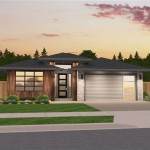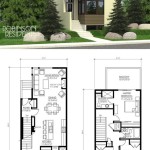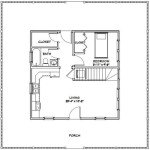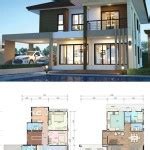A House Plans Virtual Tour is a digital representation of a house plan that allows users to explore the property remotely. Unlike traditional blueprints, virtual tours provide an interactive and immersive experience, enabling users to move through the house, view different perspectives, and access detailed information about each room.
For example, potential homebuyers can use virtual tours to get a realistic sense of a property’s layout, flow, and size before scheduling an in-person visit. Architects and builders can also utilize virtual tours to showcase their designs and collaborate with clients more effectively.
In the following sections, we will delve into the benefits of house plans virtual tours, explore the different types available, and provide tips for creating engaging and informative virtual experiences.
House Plans Virtual Tours offer numerous benefits:
- Remote property exploration
- Interactive and immersive experience
- Detailed room information
- Enhanced homebuyer decision-making
- Efficient collaboration for architects and builders
- Marketing tool for real estate agents
- Showcase of design concepts
- Time-saving for all parties involved
- Accessibility for individuals with mobility challenges
- Environmentally friendly alternative to physical blueprints
Virtual tours are transforming the way we experience and interact with house plans.
Remote property exploration
One of the most significant benefits of House Plans Virtual Tours is the ability to explore properties remotely. This feature is particularly advantageous for potential homebuyers who live far from the property or have limited time for in-person visits. Virtual tours allow users to get a comprehensive understanding of the property’s layout, flow, and size without leaving the comfort of their own home.
Virtual tours provide a detailed and interactive experience that mimics walking through the property in person. Users can navigate through different rooms, view the property from various perspectives, and zoom in on specific features to examine them closely. This level of detail allows users to make informed decisions about the property before scheduling an in-person visit, saving time and effort for both the buyer and the seller.
Remote property exploration is also beneficial for individuals with mobility challenges or those who live in remote areas with limited access to housing options. Virtual tours enable these individuals to explore properties that may otherwise be inaccessible to them, expanding their home search options and empowering them to find their dream home.
Furthermore, virtual tours can be shared easily with family members, friends, or real estate agents, allowing multiple parties to participate in the property exploration process remotely. This collaborative approach can streamline the decision-making process and ensure that everyone involved has a clear understanding of the property.
Interactive and immersive experience
House Plans Virtual Tours provide an interactive and immersive experience that allows users to explore properties as if they were physically present.
- 360-degree views: Virtual tours offer a 360-degree perspective of each room, enabling users to pan and zoom to examine the space from different angles. This feature provides a comprehensive understanding of the room’s layout, dimensions, and relationship to other areas of the house.
- Realistic graphics: Advanced rendering techniques are used to create realistic and detailed virtual environments. Users can experience the property’s finishes, textures, and lighting as if they were actually walking through the space. This immersive experience helps users visualize the property’s potential and make informed decisions about its suitability.
- Interactive elements: Virtual tours often include interactive elements that enhance the user’s experience and provide additional information. Users may be able to open doors, turn on lights, or view floor plans and measurements. These interactive features allow users to explore the property at their own pace and focus on the aspects that are most important to them.
- Customization: Some virtual tours offer customization options, allowing users to personalize their experience. Users may be able to add furniture and dcor to the virtual space or view different color schemes and finishes. This customization feature enables users to envision the property as their own and make informed decisions about their design preferences.
The interactive and immersive nature of House Plans Virtual Tours revolutionizes the way users experience and interact with properties. By providing a realistic and engaging virtual environment, virtual tours empower users to make informed decisions, streamline the home search process, and envision their dream home.
Detailed room information
House Plans Virtual Tours provide detailed and comprehensive information about each room in the property. This information enhances the user’s understanding of the space and helps them make informed decisions about the property’s suitability.
- Dimensions and measurements: Virtual tours often include accurate dimensions and measurements for each room. This information is crucial for users who want to plan furniture placement, assess the size of the space, and compare it to other properties.
- Finishes and materials: Virtual tours showcase the finishes and materials used in each room, allowing users to visualize the property’s aesthetic appeal and quality. Users can examine the flooring, wall coverings, countertops, and fixtures to assess the overall design and craftsmanship.
- Lighting and fixtures: Virtual tours provide information about the lighting and fixtures in each room. Users can view the placement of windows, natural light sources, and artificial lighting fixtures to assess the brightness and ambiance of the space. This information is essential for users who are concerned about natural light and energy efficiency.
- Built-in features: Virtual tours highlight built-in features such as fireplaces, bookshelves, closets, and storage solutions. These features can significantly impact the functionality and livability of a space, and virtual tours provide users with a clear understanding of what is included in the property.
The detailed room information provided by House Plans Virtual Tours empowers users to make informed decisions about the property’s layout, functionality, and suitability. By providing accurate measurements, showcasing finishes, highlighting built-in features, and displaying lighting conditions, virtual tours offer a comprehensive understanding of each room and enhance the overall user experience.
Enhanced homebuyer decision-making
House Plans Virtual Tours empower homebuyers with the necessary information to make informed decisions about their property purchases. By providing an immersive and engaging experience, virtual tours help buyers assess the suitability of a property and make confident choices.
- Informed decision-making: Virtual tours allow homebuyers to explore properties remotely, enabling them to make informed decisions before scheduling in-person visits. By providing a comprehensive understanding of the property’s layout, flow, and size, virtual tours help buyers identify properties that meet their specific needs and preferences, saving them time and effort.
- Realistic expectations: Virtual tours provide a realistic representation of the property, allowing buyers to assess the space and its potential accurately. This realistic portrayal helps buyers avoid disappointment during in-person visits and ensures that they have a clear understanding of what to expect from the property.
- Comparative analysis: Virtual tours facilitate comparative analysis of multiple properties. Homebuyers can easily switch between different virtual tours, compare layouts, assess room sizes, and evaluate finishes. This comparative analysis empowers buyers to make well-informed decisions and identify the property that best meets their requirements.
- Improved communication: Virtual tours enhance communication between homebuyers and real estate agents. By sharing virtual tours with their agents, buyers can articulate their preferences and concerns more effectively. Virtual tours provide a common visual reference, enabling agents to understand buyers’ needs and provide tailored recommendations.
House Plans Virtual Tours revolutionize the homebuying process by empowering buyers with the information and tools they need to make confident decisions. By providing immersive experiences, realistic representations, comparative analysis capabilities, and improved communication channels, virtual tours streamline the home search process and enhance the overall homebuying experience.
Efficient collaboration for architects and builders
House Plans Virtual Tours streamline collaboration between architects and builders, enhancing communication and ensuring project efficiency.
Virtual tours provide a shared visual platform where architects and builders can collaborate in real-time. Architects can showcase their designs in a realistic and immersive environment, enabling builders to visualize the project’s intent and make informed decisions. This shared understanding reduces misinterpretations and ensures that the project aligns with the architect’s vision.
Virtual tours also facilitate remote collaboration, allowing architects and builders to work together regardless of their physical location. This feature is particularly advantageous for large-scale projects or when team members are geographically dispersed. Remote collaboration saves time, reduces travel expenses, and enables efficient project progress.
Furthermore, virtual tours serve as a central repository for project information. Architects and builders can access and update the virtual model in real-time, ensuring that everyone has the most up-to-date information. This eliminates the need for multiple versions of plans and reduces the risk of errors due to outdated information.
Overall, House Plans Virtual Tours enhance communication, streamline collaboration, and improve project efficiency for architects and builders. By providing a shared visual platform, facilitating remote collaboration, and serving as a central repository for project information, virtual tours empower construction professionals to work together more effectively and deliver high-quality projects.
Marketing tool for real estate agents
House Plans Virtual Tours are a powerful marketing tool for real estate agents, enabling them to showcase properties in a captivating and immersive way.
Virtual tours allow real estate agents to create compelling marketing materials that highlight the unique features and benefits of a property. By providing potential buyers with a realistic and interactive experience, virtual tours generate excitement and interest, driving more leads and increasing conversion rates.
Furthermore, virtual tours are easily shareable on social media, email, and other online platforms. Real estate agents can embed virtual tours on their websites and share them with potential buyers directly. This wide reach and accessibility expand the agent’s marketing reach and attract a larger pool of potential buyers.
Virtual tours also enable real estate agents to differentiate themselves from competitors. By offering virtual tours, agents demonstrate their commitment to innovation and provide a superior customer experience. This differentiation can give agents a competitive edge and help them secure more listings and close more deals.
In summary, House Plans Virtual Tours are a transformative marketing tool for real estate agents. By creating immersive experiences, generating excitement, expanding reach, and differentiating services, virtual tours empower agents to effectively showcase properties, attract potential buyers, and drive successful sales outcomes.
Showcase of design concepts
House Plans Virtual Tours serve as a powerful tool for architects and interior designers to showcase their design concepts and demonstrate the potential of a space.
- Immersive visualization: Virtual tours provide an immersive experience that allows users to explore the space as if they were physically present. This immersive visualization enables architects and designers to convey their design intent effectively and showcase the flow, scale, and spatial relationships within the property.
- Interactive exploration: Virtual tours allow users to interact with the space by navigating through different rooms, zooming in on details, and adjusting lighting conditions. This interactive exploration empowers users to explore the design concepts in-depth and understand the functionality and livability of the space.
- Material and finish selection: Virtual tours can be used to showcase different material and finish options, providing users with a realistic representation of the final design. Architects and designers can present multiple design schemes, allowing users to visualize the impact of different material choices on the overall aesthetic and ambiance of the space.
- Collaboration and feedback: Virtual tours facilitate collaboration between architects, designers, and clients. By sharing virtual tours, stakeholders can provide feedback and discuss design concepts in a shared virtual environment. This collaborative approach streamlines the design process and ensures that the final design meets the needs and preferences of all parties involved.
Overall, House Plans Virtual Tours revolutionize the way design concepts are showcased and communicated. By providing immersive visualization, interactive exploration, material selection options, and collaborative feedback mechanisms, virtual tours empower architects and designers to effectively present their ideas and engage clients in the design process.
Time-saving for all parties involved
House Plans Virtual Tours significantly reduce the time required for all parties involved in the property exploration and decision-making process.
For potential homebuyers, virtual tours eliminate the need for multiple in-person visits to different properties. They can explore properties remotely, at their convenience, saving them valuable time and effort. Virtual tours allow buyers to narrow down their options and identify properties that meet their specific needs before scheduling in-person visits, resulting in more efficient and targeted property searches.
Real estate agents benefit from time savings as well. By providing virtual tours, agents can reduce the number of physical showings required, freeing up their time for other tasks such as lead generation, marketing, and closing deals. Virtual tours pre-qualify potential buyers, ensuring that only those who are genuinely interested in the property schedule in-person visits, leading to more productive and efficient use of the agent’s time.
Architects and builders also save time by utilizing virtual tours. They can share virtual models with clients and contractors, allowing for remote collaboration and feedback. Virtual tours enable architects and builders to address design changes and construction details virtually, eliminating the need for multiple site visits and meetings, resulting in faster project completion times.
Overall, House Plans Virtual Tours streamline the property exploration and decision-making process, saving time for all parties involved. By reducing the need for in-person visits, pre-qualifying potential buyers, and enabling remote collaboration, virtual tours enhance efficiency and productivity for homebuyers, real estate agents, architects, and builders.
Accessibility for individuals with mobility challenges
House Plans Virtual Tours offer unparalleled accessibility for individuals with mobility challenges, empowering them to explore properties remotely and make informed decisions about their living spaces.
Virtual tours eliminate the physical barriers that may hinder individuals with mobility challenges from visiting properties in person. They can navigate through the virtual environment at their own pace, using assistive technologies such as screen readers, keyboard navigation, and voice commands. This accessibility ensures that everyone has an equal opportunity to explore properties and find their dream home.
Furthermore, virtual tours provide a safe and convenient way for individuals with mobility challenges to view properties from the comfort of their own homes. They can explore the layout, room dimensions, and accessibility features without having to worry about navigating unfamiliar environments or encountering physical obstacles. This convenience empowers individuals with mobility challenges to participate actively in the home search process and make informed decisions about their living arrangements.
In addition, virtual tours can be customized to meet the specific needs of individuals with mobility challenges. For example, the virtual tour can be modified to highlight accessible features such as ramps, wider doorways, and roll-in showers. This customization ensures that individuals with mobility challenges can focus on properties that meet their accessibility requirements and make informed decisions about their living spaces.
Overall, House Plans Virtual Tours revolutionize the home search process for individuals with mobility challenges. By eliminating physical barriers, providing a safe and convenient way to explore properties, and offering customization options, virtual tours empower individuals with mobility challenges to actively participate in the home search process and find their dream home.
Environmentally friendly alternative to physical blueprints
House Plans Virtual Tours offer an environmentally friendly alternative to traditional physical blueprints, contributing to sustainability and reducing the impact on the environment.
The production of physical blueprints requires significant amounts of paper and ink, which contributes to deforestation and pollution. Virtual tours eliminate the need for paper-based blueprints, reducing the environmental impact associated with their production and disposal. By embracing virtual tours, the real estate industry can play a role in conserving natural resources and promoting sustainability.
Furthermore, virtual tours reduce the need for physical transportation to view properties. Potential homebuyers can explore properties remotely, eliminating the need for multiple site visits and reducing carbon emissions associated with travel. This reduction in transportation contributes to improving air quality and mitigating the impact on the environment.
In addition to reducing paper waste and transportation emissions, virtual tours promote sustainable practices in the construction industry. Architects and builders can share virtual models with contractors and clients, enabling remote collaboration and reducing the need for physical meetings. This virtual collaboration minimizes the environmental impact associated with travel and supports sustainable construction practices.
Overall, House Plans Virtual Tours provide an environmentally friendly alternative to physical blueprints, promoting sustainability and reducing the impact on the environment. By eliminating paper waste, reducing transportation emissions, and enabling sustainable collaboration, virtual tours contribute to a greener and more sustainable real estate industry and construction sector.










Related Posts








